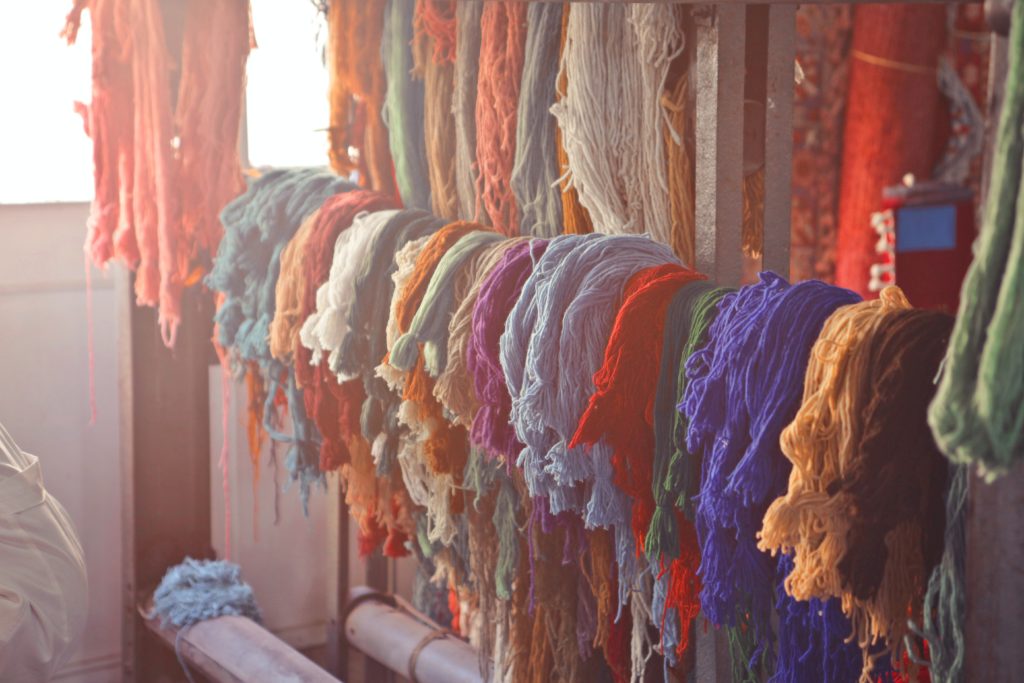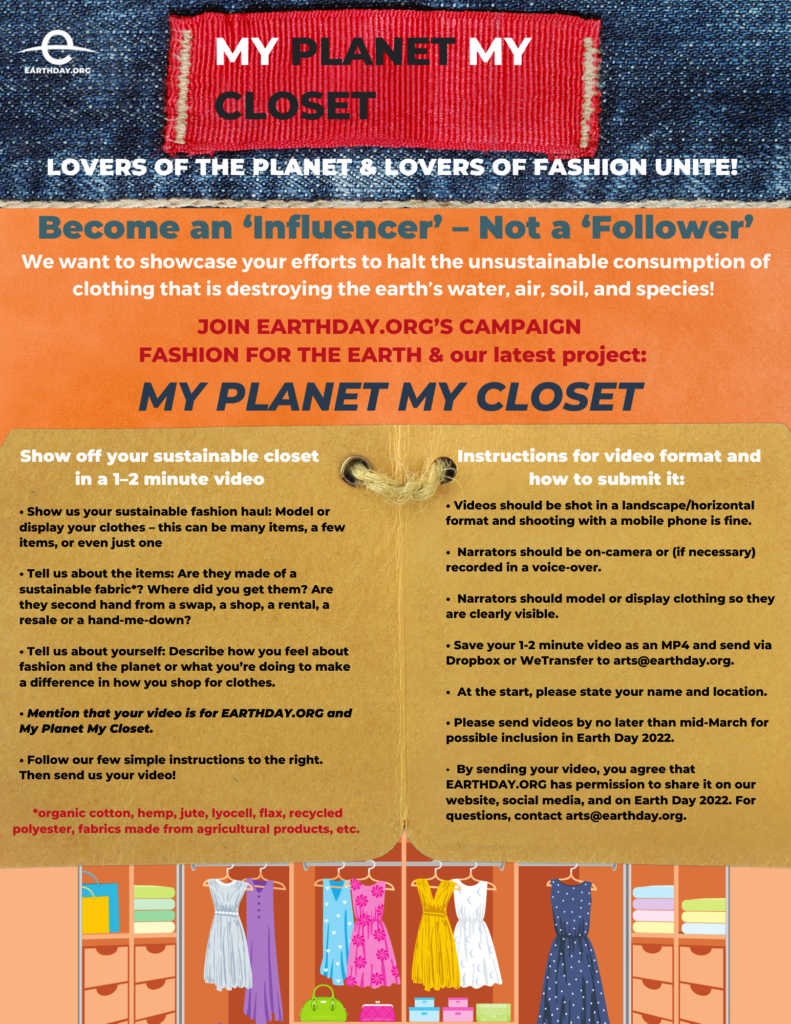Fashion for the Earth
WHAT IS SUSTAINABLE FASHION?
Fast fashion has completely revolutionized the apparel industry, but not for the better. Behind every piece of clothing in a store, there is an industry stripping the Earth of its limited resources and exploiting the labor force that works in its garment factories. Tremendous waste characterizes this industry as it depletes healthy soil, contaminates fresh water sources, pollutes the air we breathe, defiles our oceans, destroys forests and damages eco-systems and the health of their biodiversity.
Sustainable fashion refers to a clothing supply chain that is ecologically and socially responsible. It aims to reorient the industry and consumers away from the fast fashion model and toward sustainable practices in sourcing, production, distribution, marketing, and consumption.
GET THE FACTS
- The fashion industry produces 100 billion garments a year and 87% (40 million tons) end up in a landfill where they smolder and pollute the air or an incinerator.
- Only 1% of all discarded clothing is actually recycled.
- The average person today buys 60 percent more items of clothing than they did 15 years ago, but keep them for only half as long. The average garment may be worn as few as ten times before disposal.
- The apparel industry is responsible for 4% of greenhouse gas emissions – the same as the countries of Germany, France and the U.K. combined.
- Fashion is one of the most polluting of all industries. Clothing is manufactured with highly toxic dyes and heavy metals that are flushed into clean water streams, rivers and aquifers where they sicken people and animals, harm ecosystems, and cause biodiversity loss.
- The industry razes 150 million trees for cellulosic fabrics. Cattle grazing has contributed to deforestation in the Amazon and the leather produced from that region has been traced to global fashion brands’ shoes and bags.
- Non-organic cotton farming heavily depletes and degrades soil. It is one of the world’s most pesticide intensive crops. These affect the health of farmers and populations nearby. The toxic farm runoff contaminates fresh waters, wetlands and aquifers and threatens biodiversity and eco-systems.
- 69% of all clothing is made partially or entirely of synthetic fibers such as polyester which is a crude oil derivative. Petroleum is a non-renewable resource with significant negative impacts on the earth.
- Up to 40% of fashion’s carbon emissions are from the production of polyester and polyester production is expected to grow by 47% over the next 10 years.
- Washing our synthetic clothing accounts for 35% of all microplastics in the ocean making them the largest source of microplastic pollution in the world’s oceans. Microplastics infiltrate the food chain and, in a study in the Netherlands in March 2022, microplastics were found in the blood of 80% of those tested, half of which were PET (polyethylene terephthalate), the plastic material found in clothing.
- Clothing production has doubled since 2000 and with a shifting population and consumption patterns, the fast fashion industry is expected to continue to grow. By 2030, one estimate suggests that clothing consumption will grow 63% along with a rise since 2015 of 2.4 billion people into the global middle class, and a recent report estimated the world is on track to triple clothing production by 2050.
- The true cost of fast fashion’s cheap clothing is extracted from the industry’s factory garment workers. Workers are paid less than the minimum wage in countries in the global south which does not nearly constitute a “living” wage.
- In order for true recycling to take place, clothing must be collected, sorted and distributed to recyclers. These systems are in their infancy. Sorting is still done by hand. And while there are innovative technologies that can break down the fabric of used garments to make new clothing, many await business investment to scale their systems to the colossal size necessary. Fully scaled, however, these technologies could drive 80% circularity in the fashion industry.
- Most major industries are highly regulated. But the fashion industry, one of the largest manufacturing industries on the planet, is almost entirely unregulated.

(credit: https://www.bycurated.com/)
WHAT YOU CAN DO
Consumers have the power to change the trajectory of fast fashion. Here are a few important things you can do:
- Educate yourself about sustainable clothing.
- Buy less and shop for quality over quantity.
- Choose natural materials – organic cotton, linen, or hemp.
- Buy 100% recycled fabrics – 100% recycled polyester, viscose (rayon), etc.
- Research brands to identify those that are ethical and practice transparency and sustainability.
- Post a picture of yourself wearing a sustainable garment, explaining its attributes and why you like it. Tag us on social media!
- Choose brands that are manufactured in their own community and connected to the place, people behind them, local economy, and environment.
- Buy secondhand clothing.
- Swap clothes with a clothes swap group or start a swap yourself.
- Learn how to repair your clothes yourself. The longer clothes are kept, the lower their emissions footprint.
MY PLANET, MY CLOSET
‘My Planet, My Closet’ is a project designed to create a dialogue around sustainable fashion and change the prevailing mindset around shopping. ‘My Planet, My Closet’ is a play on the typical fast fashion hauls circulating on social media — but with a twist.
EARTHDAY.ORG invites you to inspire others by sending us a video about your sustainable clothing that we will showcase across our platforms. Read below how to answer our collective call to action!

Find Some Inspiration

Visit the official

Store
Support EARTHDAY.ORG and help us fight climate change.
Donate Today